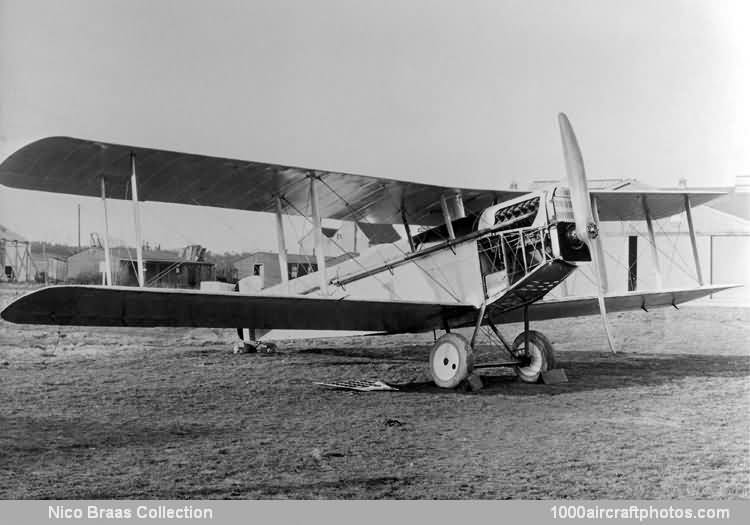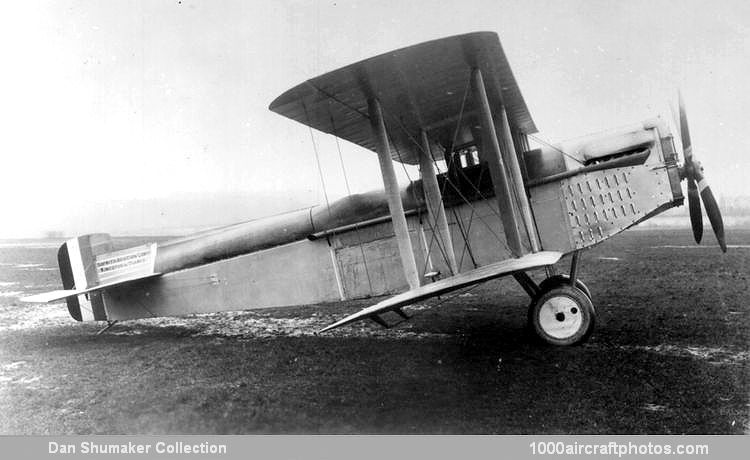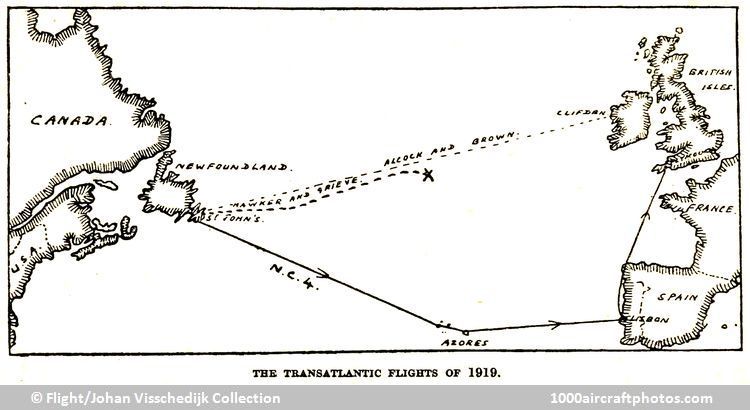11/15/2014. Remarks by
Johan Visschedijk: "Early in 1913, the Daily Mail newspaper had offered £10,000 for the first flight across the Atlantic Ocean. Though hopeful preparations had been put in hand, the war came as an interruption. In January 1919 T.O.M. Sopwith ordered the design of a capable aircraft which was to be flown by Harry G. Hawker, with Lieutenant-Commander K. Mackenzie-Grieve as navigator.
(
Dan Shumaker Collection) APS No. 3291
Designed by W. G. (George) Carter, the Sopwith Atlantic was based on the B.1 Bomber, and was built in a mere six weeks, flying by the end of February 1919. The chief innovations were the jettisonable landing gear; wooden skids to reinforce the bottom longerons and serve as landing gear; an upturned lifeboat which formed the aft decking of the deepened rear fuselage; the fitting of special wireless; a retractable wind-driven generator to provide power for the wireless; and staggered seats for the two occupants. Power plant was a 375 hp Rolls-Royce Eagle VIII twelve-cylinder liquid-cooled V-engine. Although a four-blade propeller had been used on early tests of the Sopwith Atlantic that were made in England, for the transoceanic flight a two-bladed propeller was used.
The aircraft was shipped to St. John's, Dominion of Newfoundland, which was choosen as starting point for the West to East crossing. On May 18, at 5.42 GMT Hawker and Grieve took off, reaching the shore line the landing gear was jettisonized. For the next 400 mls (640 km) they flew through fog and thereafter encountered massive clouds, but Hawker climbed above them. After nearly six hours' flying engine-water temperature rose as the radiator shutters failed to work, so Hawker dived for 3,000 ft (915 m) to cool it and dislodge any obstruction. The situation improved but on renewed climb the center of the top wing iced-up from freezing steam. Early in the next day cooling trouble returned and worsened, and more bad weather was encountered, and as completion of the flight seemed impossible, Hawker subsequently headed south for the shipping lanes, coaxing engine.
Upon dawn, the SS Mary of Denmark was sighted, so Hawker steered the aircraft about a mile ahead of ship and made a text-book ditching about mid-Atlantic; the Sopwith's lifeboat was launched as the aircraft was taking on water. Hawker, Grieve and the damaged Sopwith were taken aboard the SS Mary and taken to England. Only four weeks later, June 14-15, 1919, John Alcock and Arthur Brown made the first non-stop atlantic crossing in a
Vickers Vimy."



